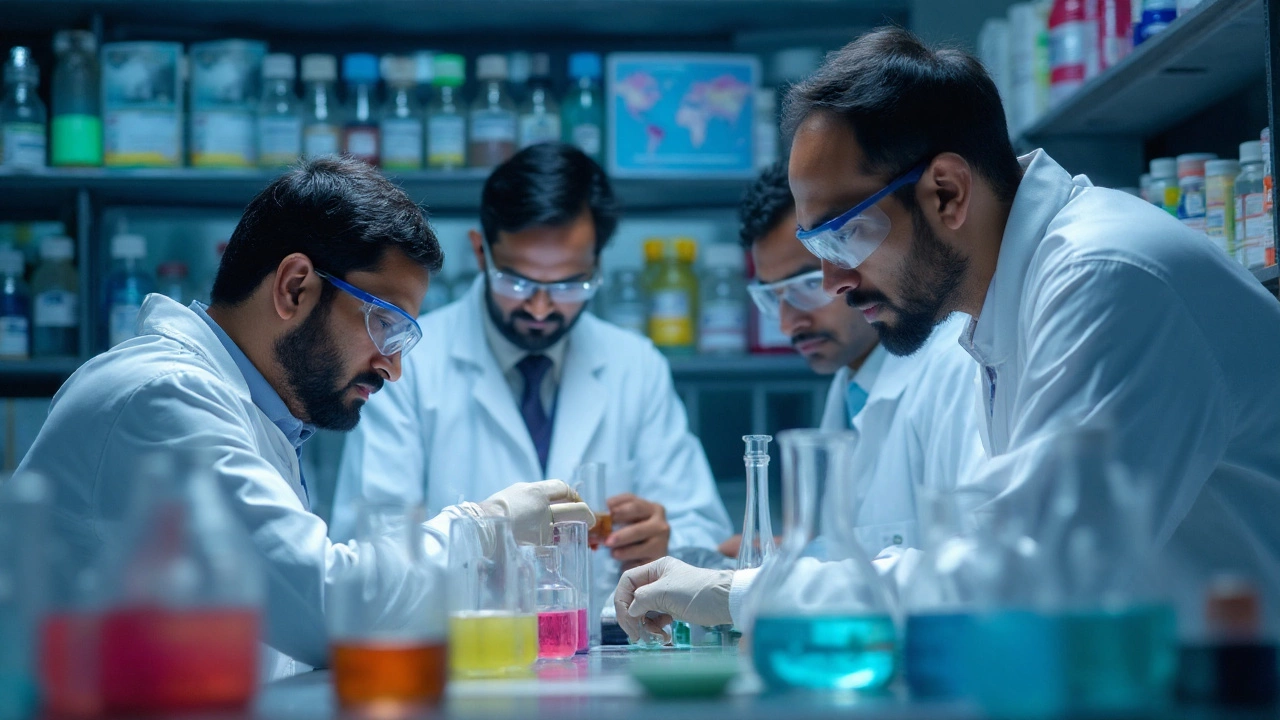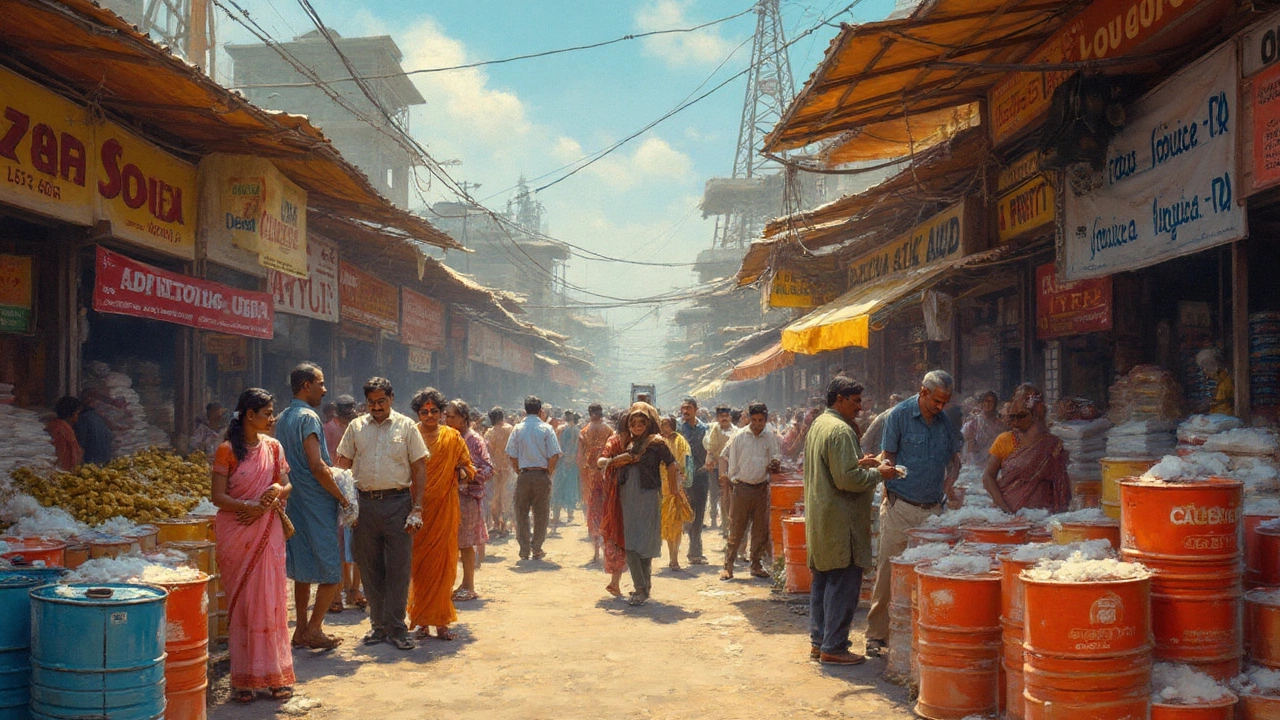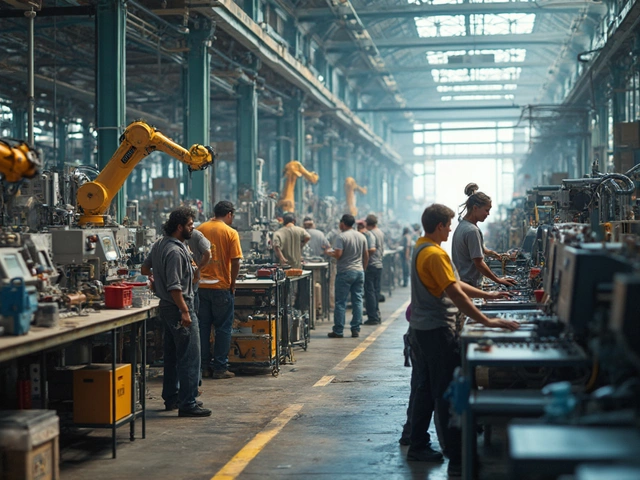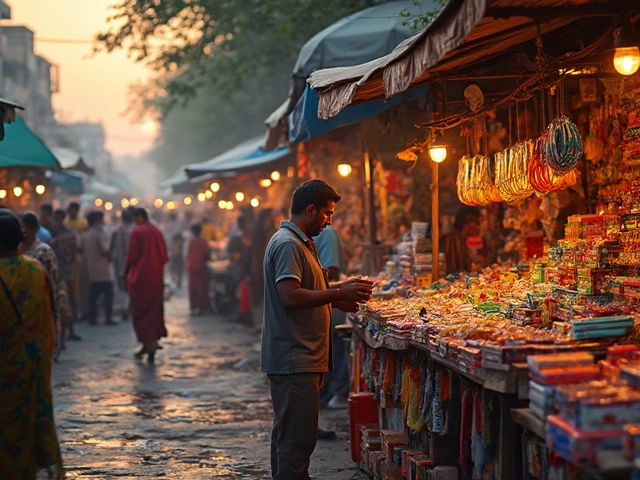Look at any booming industry in 2025, and you’ll spot one thing in the background: chemistry. It’s not just in test tubes and factories—it’s in your smartphone, your breakfast, your medicines, your clothes, your car. Now, if you really want to know where the action is, India’s chemical demand is way bigger than you’d expect. It’s not just about the “usual suspects” like urea or paint thinners. The real surge is coming from a handful of high-demand chemicals driving everything from food security to the electric vehicle revolution. Time to unpack what’s happening and why.
India’s Chemical Giants: Who’s Leading the Demand Race?
Let’s start with the big hitters. India is the 6th largest producer of chemicals globally. The chemical industry here is a mix of old-school giants and fierce up-and-comers, with Gujarat and Maharashtra cranking out almost 70% of production. And when you dig into which chemicals are crucial, it’s a diverse list. Still, a few names rise above the rest: Specialty chemicals, agrochemicals, petrochemicals (especially ethylene derivatives), and pharma intermediates get all the action. Why? They’re everywhere—in adhesives, feeding crops, powering vehicles, even in personal care products.
Specialty chemicals include flavours, fragrances, paint additives, and water treatment products. You know the funny tang in cola or the way your shampoo stays creamy? It’s all specialty chemistry. These are “value-add” products that Indian manufacturers can’t get enough of. Demand for these shot up by around 13% from 2021 to 2024, according to the Indian Chemical Council—faster than the chemical sector average. Paints, coatings, and water treatment grab the spotlight because of construction booms and water-stressed cities. Big brands like Asian Paints and Berger Paints aren’t just paint makers—they’re chemical powerhouses with billions in annual revenue.
Then there’s agrochemicals. As Indian agriculture electrifies and food needs grow, demand for herbicides, pesticides, and fertilizers is spiking. Urea, DAP (diammonium phosphate), potash, and crop-protection chemicals see high, stable demand. To give you an idea, in 2024, India consumed over 32 million tonnes of fertilizers—and that’s still rising. Let’s not skip the green revolution in ag chemistry: there’s a visible swing towards eco-friendly pesticides and biostimulants, especially with farmers under pressure to cut costs and boost soil health. Rural India is getting hooked on micro-nutrient blends and slow-release fertilizers for big yield, less hassle.
Petrochemicals, especially ethylene, polypropylene, and PVC, are the silent engines of Indian factories and households. Think toys, cables, pipes, packaging—pretty much anything plastic. With Make in India supercharging local manufacturing, plastic demand is intense. Ethylene glycol (for textiles and polyester) and PVC are now nearly impossible to import fast enough, so local production is on expansion mode. By 2024, ethylene demand was pushing past 6 million tonnes. Every urbanization push, infrastructure build, and e-commerce boom stokes fresh demand for these chemical building blocks.
Pharmaceutical intermediates are hot. India is one of the world’s largest pharma producers, but it still imports about 60% of its active pharmaceutical ingredients (APIs)—mostly from China. Since COVID, there’s been a government drive to localize these chemical ingredients, especially paracetamol base, ibuprofen intermediates, and anti-biotic feedstocks. Between 2022 and 2024, the production incentives pushed API intermediate plants to expand by more than 25%. These trends aren’t just about billion-rupee conglomerates—many small and mid-sized businesses are joining in, making APIs and intermediates for both India and export.
| Chemical | Category | 2024 Estimated Demand (Million Tonnes) | Main Uses |
|---|---|---|---|
| Urea | Agrochemical | 32 | Fertilizer |
| PVC | Petrochemical | 3.8 | Pipes, Construction, Packaging |
| Ethylene Glycol | Petrochemical | 2.4 | Textiles, Polyester |
| Herbicides & Pesticides | Agrochemical | 0.8 | Crops/Yield Protection |
| Specialty Chemicals | Specialty | ~2.3 | Paints, Adhesives, Water Treatment |
| API Intermediates | Pharma | 0.6 | Pharmaceuticals |
It’s wild how even a change in one sub-sector, like EV battery manufacturing, can tilt the whole supply pyramid, suddenly making demand rocket for things like lithium salts and electrolyte chemicals, which barely registered on anyone’s radar just five years ago.
Why Are These Chemicals In Such High Demand?
If you want a straight answer, it all comes down to three things: India’s population surge, industrial growth, and a government hooked on “Aatmanirbhar Bharat” (self-reliance). The streets of Indian towns are alive with new apartments, shopping centers, roads, and tech startups—each one gobbling up more chemicals than ever. No matter how digital the economy gets, someone still needs a pipeline, a tablet, or clean water. This is the magic sauce behind booming demand for chemicals like PVC, caustic soda, and ethylene.
Agrochemicals stand out for a different reason: food security. With almost 18% of the global population but just 2% of arable land, India can’t afford to slip on fertilizers, herbicides, or crop supplements. There’s real pressure from both government and farmers to squeeze every inch from the soil. That’s why, even after global fertilizer prices soared in 2022 and 2023, India kept up heavy subsidies and direct imports. Now, there’s a visible shift: micro-nutrient packets and bio-stimulants are moving up, as large farms want environmentally safer options and better returns.
There’s a tech twist too. Everyone’s glued to their phones, buying, posting, learning—behind all that are factories making circuit boards, batteries, plastic connectors, and protective films. Every time a smartphone or an LED light sells, chemicals like propylene glycol and polycarbonate are in demand. Even your hand sanitizer—remember those spurts during the COVID era?—runs off chemicals like isopropyl alcohol and hydrogen peroxide, which India now makes in massive new plants.
India’s "Make in India" initiative really turbocharged chemical consumption in the auto and construction sectors. For example, increased EV production needs high-purity lithium, nickel, and electrolyte chemicals now. EV battery imports hit a record $1.4 billion in 2024. If you look at the fine print, the silent workhorses are battery-grade chemicals, where local entrepreneurs are jumping in fast, especially in Gujarat and Tamil Nadu.
The power of government incentives can't be ignored. Since 2022, huge tax breaks and grants have been dangled for making API intermediates inside the country instead of importing everything from China. Add to that regulatory push for green manufacturing and everyone is suddenly investing in eco-friendly solvents and sustainable additives.
Don’t underestimate Indian consumers either. They’re picky about safe, long-lasting products, and demand for high-purity, certified chemicals is up. Whether it’s dye for a sari, the resin in a smartphone case, or the molecules in a chilli-flavoured crisp, today’s buyers care about quality—and industries can’t slack off.

Emerging Trends and Shifting Demands: What’s Hot in 2025?
A lot has changed since the standard “commodity chemicals only” story. As we barrel through 2025, India’s chemical demand is being shaped by some surprising new trends. One major trend is green chemistry—companies are shifting to low-waste, environment-friendly options. Biodegradable surfactants, recycled plastics’ feedstock, non-toxic dyes—these aren’t just good PR. They’re huge business drivers, thanks to stricter pollution laws and exports needing eco-certification.
Urbanization keeps switching up what’s in demand. The rush to build affordable homes and smart cities means more adhesives, paints with anti-microbial tech, waterproofing chemicals, and tiles made from new-generation resins. As per Indian Brand Equity Foundation (IBEF), specialty chemicals grew at a 12% annual rate from 2022 to 2024—led by construction, water treatment, and consumer products. The paint segment alone is forecast to reach ₹1 trillion turnover by mid-2026.
E-mobility is another game changer. Electric vehicle batteries, cables, and lightweight components need lithium hexafluorophosphate, nickel sulphate, and specialty flame-retardant polymers. We’re seeing new lithium refining plants and giga-factories taking off. There’s hardly an EV start-up in India not frantically searching for electrolytes and high-purity solvents. Battery-grade chemicals, barely on the map in 2020, are now a must-have for every new manufacturer—lots of smaller firms see this as their way into the big leagues.
The push towards self-reliance is also scrambling supply chains. Pharma companies that once relied on Chinese-made API intermediates are pouring money into domestic production of things like para-aminophenol and acetic anhydride. The demand spike has made these bases, and many others, as hot as gold among chemical suppliers in Mumbai and Hyderabad. Between 2023 and 2024, API plant investment hit ₹24,000 crore (about £2.2B)—it’s a supply race where even small regional players can strike big if they specialize right.
Another often-overlooked segment is food processing chemicals. With packaged food sales climbing and new safety rules, preservatives, edible coatings, and food-grade enzymes are all climbing in demand. Bromates, ascorbates, and natural flavor additives are powering everything from frozen meals to street snacks. Even low-salt chips and parathas on the shelf are riding on tailored chemical add-ons to keep them fresher, longer.
Lastly, customization is big. Businesses want bespoke blends for exacting needs—antimicrobial floor coatings for hospitals, fast-dry glues for shoe factories, dust-control resins for rural roads. Niche producers who can play the “innovation” card are seeing their order books bulge, especially if they can also prove a smaller carbon footprint.
Turning Chemical Demand into Opportunity: Tips and Data for Entrepreneurs
There’s a loaded question—how can you turn this spiraling demand into a real business win? One trick is to play to your strengths. If you’re near a cluster like Gujarat, Tamil Nadu, or Maharashtra, you’re closer to both suppliers and clients. Work with the supply chains for PVC, pharma intermediates, or specialty additives. Suppliers are desperate for reliable, high-purity batches. Partner with research labs and universities—India’s IITs and CSIR branches are constantly looking for industrial match-ups for their latest processes.
- Stay hyper-aware of import/export shifts—government bans, tariffs, or incentives can make or break specific chemicals (like acetone, caustic soda, or IBFs) overnight.
- Go green where you can—new rules favor low-carbon and eco-friendly options. If you can supply certified green packaging, plant-based solvents, or micro-nutrient blenders, you’re ahead of the game.
- Watch for opportunities in custom compounds—healthcare and electronics need tailor-made cleaning agents, adhesives, and resins. If you can offer lab customization in days (not weeks), you’ll win loyal big clients.
- Pay attention to online B2B platforms. Chemical marketplaces like IndiaMART and ChemEase have made it easier to connect straight to buyers—no giant trading house needed, even for millions of litres/tonnes per year.
- For agrochemicals, work with farmer co-ops. They’re best placed to test out niche fertilizers and biostimulants before you scale up.
A key fact: In 2024, India’s chemical exports crossed $32 billion, most of it in dyes, pigments, and agrochemicals, making it one of the top five global chemical exporters. If you want to join the fray, think beyond “just another supplier”—become an innovation partner able to solve a real problem, whether it’s longer shelf life, eco-friendly plant protection, or faster molding for automotive plastics.
The Indian chemical industry is expected to touch $300 billion by 2026, with specialty chemicals alone accounting for nearly $80 billion. That’s the scale you’re stepping into. Meanwhile, the biggest bottlenecks—like outdated plants, water shortages, pollution rules, and fluctuating global prices—are pushing the savviest players to reinvent old products. Even digitalization is kicking off, with chemical plants adding sensors and AI to fine-tune output and quality.
One tip that works for almost everyone? Keep an eye not just on what’s trending today, but on what regulatory tweaks and tech innovations could boost demand in six months or a year. If you get in early, you may just dominate tomorrow’s most-wanted chemical niche.






